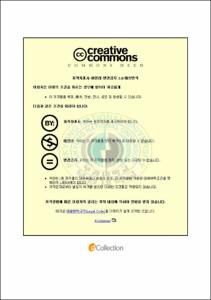천연조미료 생산을 위한 굴 효소 가수분해물 제조의 최적화
- Alternative Title
- Optimization in Manufacture of Enzymatic Hydrolyzates of Oyster for a Natural Seasoning
- Abstract
- This study determined optimun conditions for making a natural seasoning using oyster by enzymatic method.
Among three pretreatment conditions, the optimal pretreatment condition for oyster was obtained when dipped with 5% salt solution and sequentially centrifuged at 13,500rpm for 3 min. Also, Delvolase was selected as an enzyme for oyster because of the high hydrolytic activity. The optimal hydrolytic conditions was followed as below. Delvolase concentration, reaction time, salt concentration, reaction temperature and initial were 2%, 6 hours, 5%, 50℃ and pH 6.0, respectively.
Proximate composition of enzymatic hydrolysates from oyster under the optimum conditions was 89.2% moisture, 1.8% suger content, 8.6% crude protein, 0.87% crude lipid and 3.38% ash. Salinity, acidity, volatile basic nitrogen of those were 1.0%, 0.36%, 11.57mg%, 952.56mg%, respectinely. Amino acid compositions of enzymatic hydrolysis from oyster was mainly contained with 0.66% glutamic acid and 0.46 aspartic acid.
Optimal enzymatic hydrolysis condition for making oyster seasoning was analyzed by responses surface method. Central point of reaction time and reaction temperature was in the vicinity of 37hr and 50℃. Saddle point between reaction time and initial pH was presented and saddle point between initial pH and reaction temperature was presented, also. As a result of response surface method, initial pH was a main independent variable. R-squares for amino-nitrogen and VBN are 0.9920 and 0.9904, respectively. It showed a statistical difference in 99.9% level. Results of regression analysis were as follows:
regression equation for amino-nitrogen
- 4486.928457 + 439.811616 pH + 136.708090 Temp. + 23.815771 Time- - 0.259526 pH2 - 34.706250 Temp.² - 1.398198 Time² + 0.484833 pH x Temp. + 1.031759 pH x Time - 0.124542 Temp. x Time
regression equation for VBN
53.023862 + (-3.705370) pH + (-1.279625) Temp. + 0.131466 Time - 0.337222 pH² - 0.000644 Time² + (-0.011167) pH x Temp. + (- 0.016574) pH x Time - 0.001208 Temp. x Time
The optimal condition for enzymatic hydrolysis of oyster was pH7, reaction temperature 50℃,and reaction time 37hours.
- Issued Date
- 2008
- Awarded Date
- 2008. 2
- Type
- Dissertation
- Keyword
- 천연조미료 굴 효소 가수분해물 효소농도
- Publisher
- 부경대학교 대학원
- Alternative Author(s)
- Kim, Jin Hee
- Affiliation
- 부경대학교 대학원
- Department
- 대학원 식품공학과
- Advisor
- 양지영
- Table Of Contents
- Abstract
서론 = 1
재료 및 방법 = 7
1. 재료 = 7
2. 방법 = 7
2.1 전처리 및 효소선정에 따른 가수분해물 제조 = 7
2.2 굴 가수분해물 제조를 위한 효소농도별 실험 = 8
2.3 굴 가수분해불 제조를 위한 반응시간별 실험 = 8
2.4 굴 가수분해물 제조를 위한 염 농도별 실험 = 9
2.5 굴 가수분해물 제조를 위한 반응온도별 실험 = 9
2.6 굴 가수분해물 제조를 위한 초기 pH별 실험 = 9
2.7 일반성분 분석 = 10
2.8. 휘발성염기질소 함량 측정 = 10
2.9. 아미노태질소 함량 측정 = 11
2.10. 반응표면 및 통계처리 = 11
2.11. 유리아미노산 함량 측정 = 12
2.12 향기 성분 측정 = 12
결과 및 고찰 = 16
1. 굴 가수분해물 제조를 위한 전처리 방법의 선정 = 16
2. 굴 가수분해물 제조를 위한 단백가수분해 효소의 선정 = 18
3. 굴 가수분해물 제조를 위한 가수분해 조건 = 24
3.1 굴 가수분해물 제조를 위한 효소농도별 영향 = 24
3.2 굴 가수분해물 제조를 위한 반응시간별 영향 = 27
3.3 굴 가수분해물 제조를 위한 염 농도별 영향 = 30
3.4 굴 가수분해물 제조를 위한 반응온도별 영향 = 30
3.5 굴 가수분해물 제조를 위한 초기 pH별 영향 = 33
4. 반응표면분석법에 의한 굴 가수분해물 제조의 최적화 = 36
5. 최적조건에서의 굴 가수분해물의 유리아미노산 함량 = 53
6. 최적조건에서의 굴 가수분해물의 향기 성분 = 55
요약 = 58
참고문헌 = 60
- Degree
- Master
- Files in This Item:
-
-
Download
 천연조미료 생산을 위한 굴 효소 가수분해물 제조의 최적화.pdf
기타 데이터 / 1.07 MB / Adobe PDF
천연조미료 생산을 위한 굴 효소 가수분해물 제조의 최적화.pdf
기타 데이터 / 1.07 MB / Adobe PDF
-
Items in Repository are protected by copyright, with all rights reserved, unless otherwise indicated.